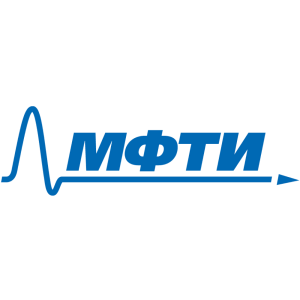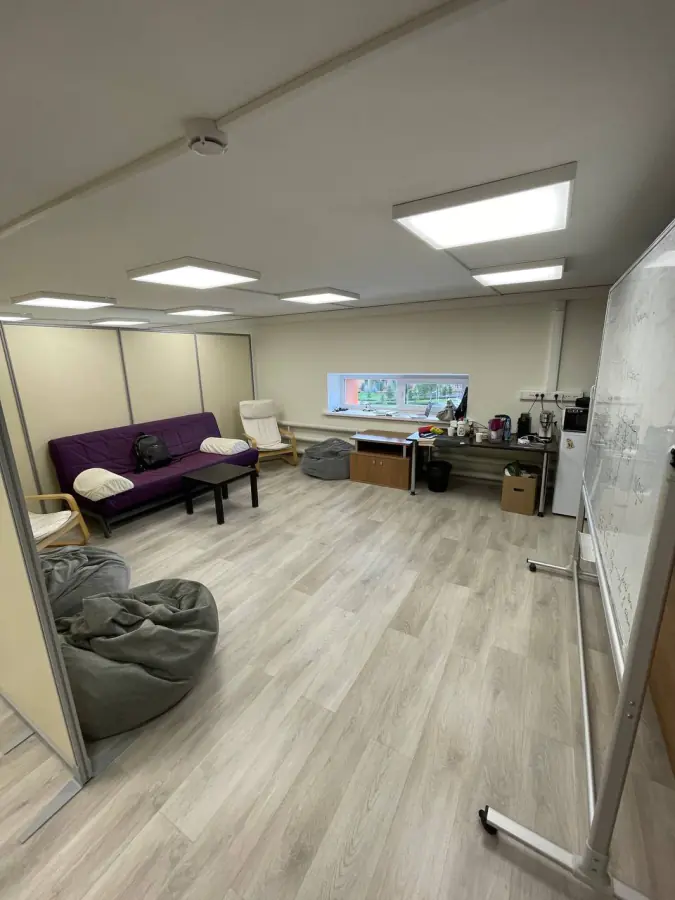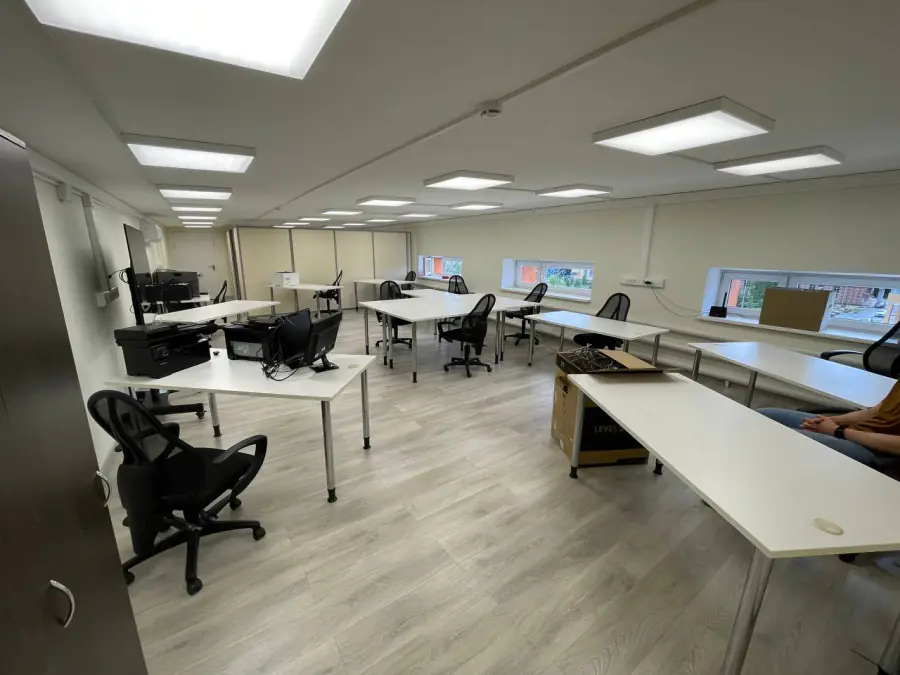Laboratory of Computer-aided Materials Design
- DFT calculations
- Molecular modeling
- Atomic modeling
Ivan Kruglov
Scientific supervisor
Ivan Goremykin
Engineer
George Bychov
Engineer
Lyudmila Bereznikova
Research Engineer
Anastasiya Zelenina
Junior researcher

Arslan Mazitov
Junior researcher
Aleksandr Iziurov
Research Engineer
Konstantin Kravtsov
Research assistant

Daniil Alekseev
Student

Pavel Maslov
Student

Vyacheslav Korotnev
Student
Research directions
Application of machine learning methods to search for new optical materials
+
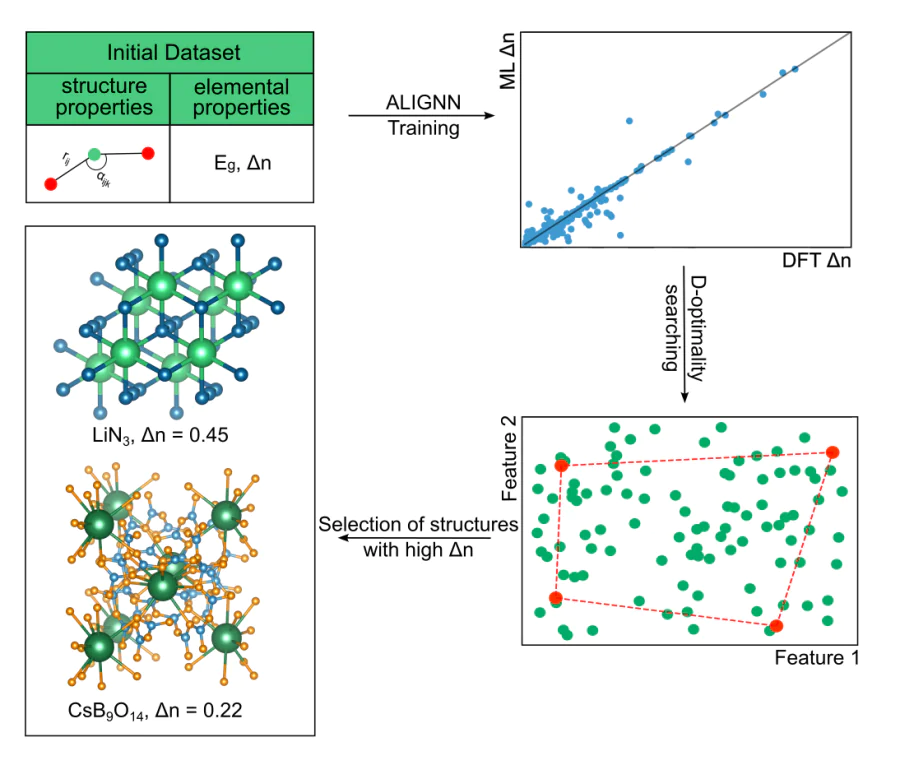
One of the urgent tasks of modern materials science is the search for optical functional materials with unique properties, such as birefringence and second harmonic generation, characterizing their optical anisotropy. These properties are interesting due to their application in a wide variety of fields of science and technology: polarization devices, optical communications, photolithography and solid-state lasers. Within the framework of this direction, the possibility of using geometric representations of the crystal structure and machine learning methods to select materials with the desired optical anisotropy characteristics is considered. Machine learning is already actively used to predict various properties of materials based on their structure and chemical composition, and some of the proposed methods make it possible to avoid expensive experiments. In our work, graph neural networks are used to predict the optical coefficients characterizing the optical anisotropy of a material, showing their effectiveness in the field of computational materials science. The results obtained during the study are confirmed by calculations using density functional theory (DFT), and are also verified in the experiment.
High-temperature chemistry in carbon-containing materials
+
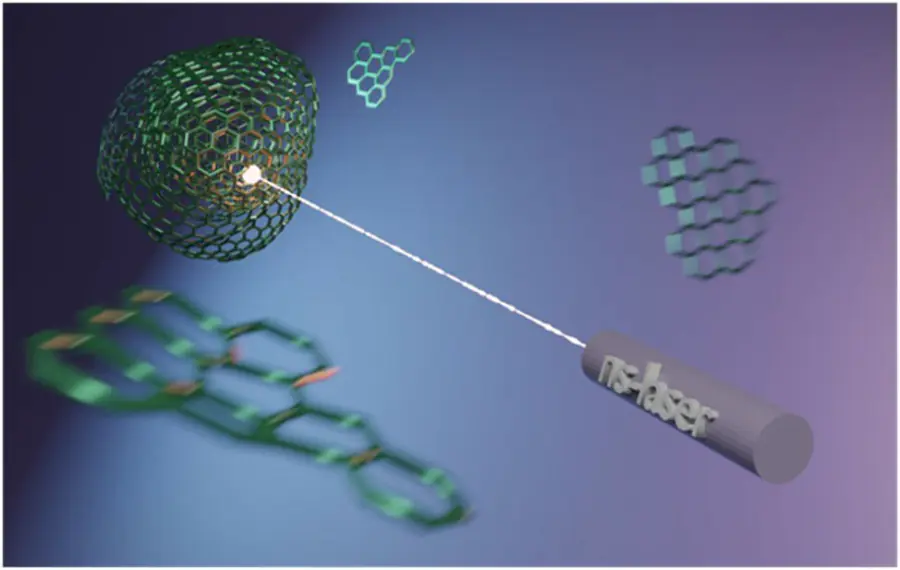
Carbon is capable of generating an incredible number of allotropic modifications (mostly metastable, but stable), and is also the backbone of all organic chemistry. To describe such a complex element using atomistic modeling methods, a combination of the most advanced potentials (for example, ReaxFF or machine-learning potentials) and DFT methods is required.
With the help of such tools, we
explained what happens to graphene oxide during ultrafast lares heating and how this can help in optimizing graphene production techniques [1] (press release - https://naked-science.ru/article/column/zakalka-lazernym-izlucheniem-uluchshila ). For tasks related to graphene oxide, the RNF grant 23-23-442 (hands) is being carried out in the laboratory. Orekhov N.D.);
we model the processes of pyrolysis of hydrocarbons and soot formation [2]. RNF 20-79-245 (hands) was devoted to this topic. Orekhov N.D.);
we study phase transitions in pure carbon in the region of extreme temperatures [3].
[1] (IF = 11.307) N Orekhov, et al «Mechanism of graphene oxide laser reduction at ambient conditions: experimental and ReaxFF study» // Carbon (2022).
[2] (IF=5.767) D Potapov, N Orekhov // «Mechanisms of soot thermal decomposition: Reactive molecular dynamics study» Combustion and Flame (2023).
[3] (IF = 11.307) N Orekhov, M Logunov // «Atomistic structure and anomalous heat capacity of low-density liquid carbon: Molecular dynamics study with machine learning potential», Carbon (2022).
Investigation of magnetism of strongly correlated systems
+
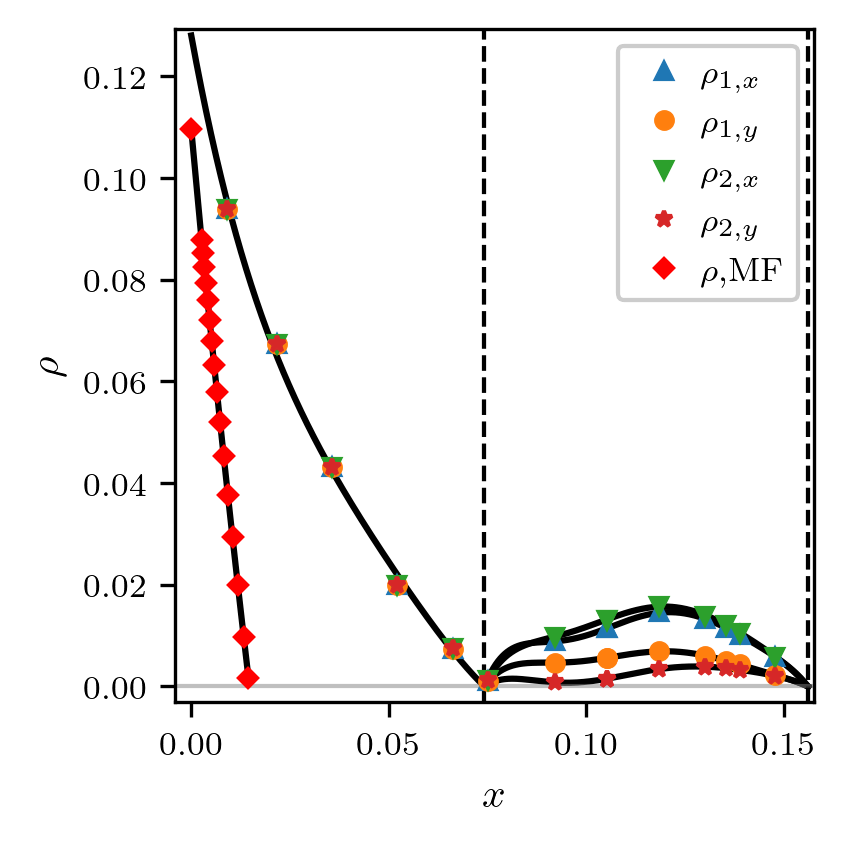
Strongly correlated electronic systems are known to be in a variety of phase states, and their physical properties are determined by correlations that are different in nature and comparable in energy scale. Magnetic correlations in such systems have a significant effect on the properties of even paramagnetic states of matter. To study the properties of strongly correlated systems with strong magnetic fluctuations, we use numerical approaches based on the Dynamic Mean Field Theory (DMFT). At the moment, one of the main directions of our activity is the study of the influence of geometric frustration on strongly correlated magnetism.
First-principle Raman spectroscopy for reliable characterization of photonic and optoelectronic materials
+
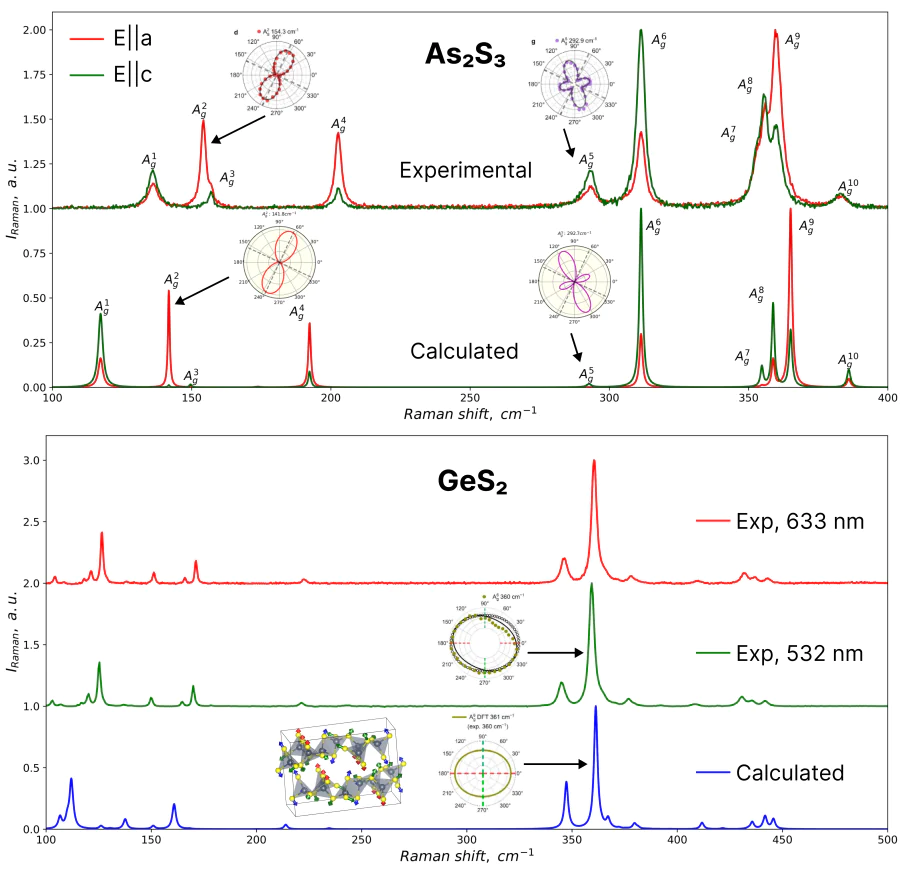
Van der Waals materials attract attention in science and technology because of their anisotropic crystal structure and, accordingly, anisotropic properties such as birefringence, Young's modulus, thermal and electrical conductivity, etc. They open up opportunities for the creation of new electronic, photonic, optoelectronic, thermoelectric and many other devices with outstanding characteristics.
For example, arsenic trisulfide As2S3 and germanium disulfide GeS2 are unique van der Waals crystals with high measured refractive indices and birefringence. But a step before the compound is embedded in an optical device, its purity should be checked, since impurities significantly affect the optical properties of solids. It is also important to know the position of the crystallographic axes of a material with anisotropic properties for integration into the device. One of the ways to confirm the crystal structure and establish the orientation of the non-metallic substance under study is to use Raman spectroscopy. It is an easy-to-use (compared to radiography), non-invasive and, in many cases, non-destructive method (compared to chemical methods).
Therefore, an important task is the theoretical prediction of the Raman spectrum of light scattering of non-contaminated crystals in order to assess their degree of purity in reality for further experiments and applications. Inspired by this problem, we have already demonstrated the validity of our approach in the work [1] using the example of As2S3 and will soon publish a paper where the spectra for GeS2 were perfectly reproduced, given its very complex crystal structure. In addition, our calculated polar diagrams for Raman-active modes are in excellent agreement with the measured ones.
Thus, our method opens up great prospects for determining the crystallographic axes and verifying the purity of semiconductor materials by comparing the Ab Initio spectra with experimental ones.
1. Slavich, A. S., Ermolaev, G. A., Tatmyshevskiy, M. K., Toksumakov, A. N., Matveeva, O. G., Grudinin, D. V., Voronin K.V., Mazitov A., Kravtsov K. V. , Syuy A. V., Tsymbarenko D. M., Mironov M. S., Novikov S. M., Kruglov I., Ghazaryan D. A., Vyshnevyy A. A., Arsenin A. V., Volkov V. S., Novoselov, K. S. (2024). Exploring van der Waals materials with high anisotropy: geometrical and optical approaches. Light: Science & Applications, 13, 68.
Publications and patents
Found
Nothing found, try to update filter.
2024
—
2027
| Круглов Иван Александрович
Lab address
Московская обл., г. Долгопрудный, Научный переулок, 4к1
Authorization required.
